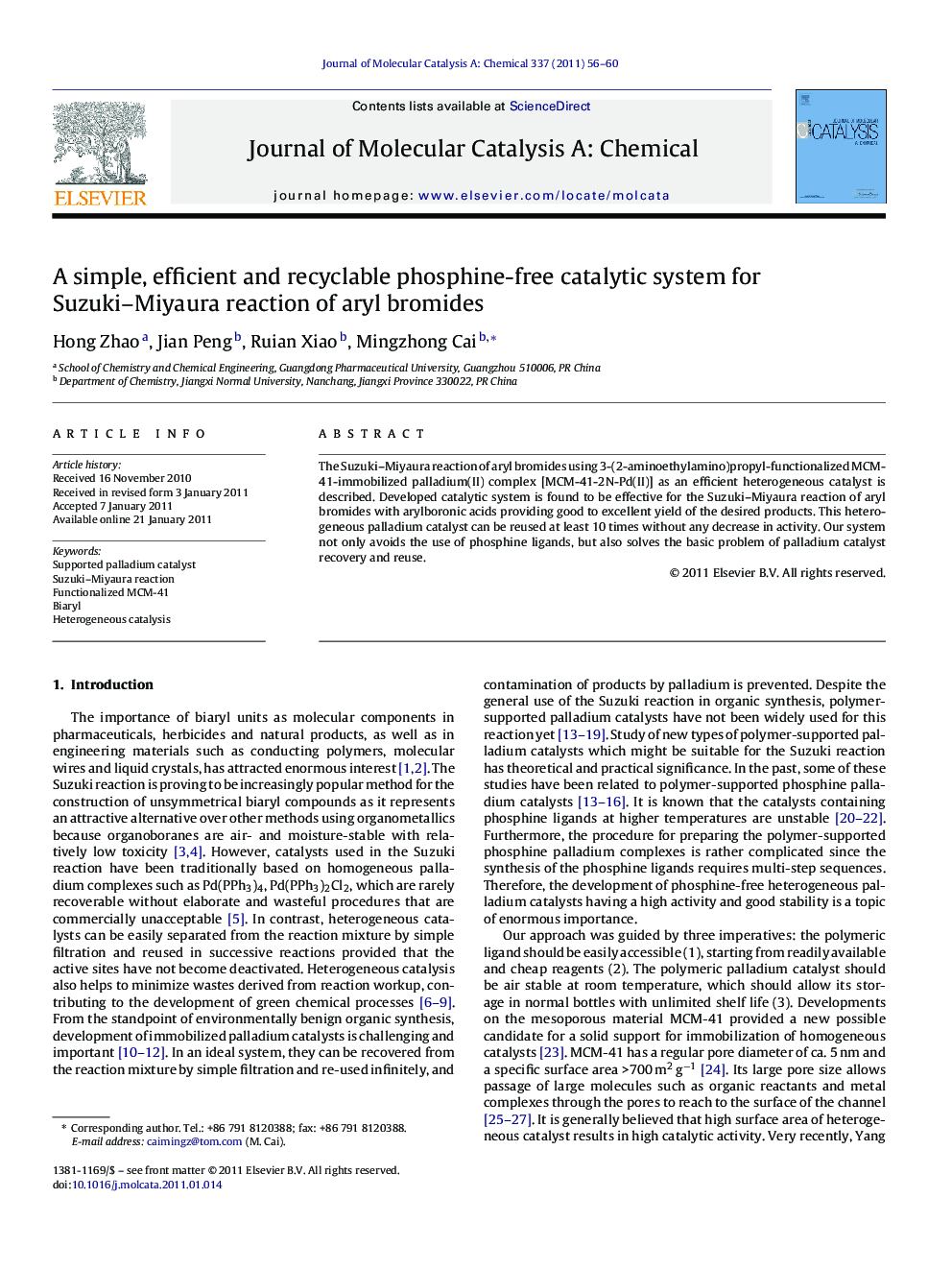| Article ID | Journal | Published Year | Pages | File Type |
|---|---|---|---|---|
| 66488 | Journal of Molecular Catalysis A: Chemical | 2011 | 5 Pages |
The Suzuki–Miyaura reaction of aryl bromides using 3-(2-aminoethylamino)propyl-functionalized MCM-41-immobilized palladium(II) complex [MCM-41-2N-Pd(II)] as an efficient heterogeneous catalyst is described. Developed catalytic system is found to be effective for the Suzuki–Miyaura reaction of aryl bromides with arylboronic acids providing good to excellent yield of the desired products. This heterogeneous palladium catalyst can be reused at least 10 times without any decrease in activity. Our system not only avoids the use of phosphine ligands, but also solves the basic problem of palladium catalyst recovery and reuse.
Graphical abstractThe Suzuki–Miyaura reaction of aryl bromides using 3-(2-aminoethylamino)propyl-functionalized MCM-41-immobilized palladium(II) complex [MCM-41-2N-Pd(II)] as an efficient heterogeneous catalyst is described. This heterogeneous palladium complex is highly active catalyst and can be reused at least 10 times without any decrease in activity.Figure optionsDownload full-size imageDownload high-quality image (164 K)Download as PowerPoint slideResearch highlights► MCM-41-2N-Pd(II) complex was firstly investigated in the Suzuki–Miyaura reaction. ► This phosphine-free heterogeneous palladium catalyst exhibited high catalytic activity. ► This palladium catalyst can be reused at least 10 times without any decrease in activity. ► Our catalytic system provides a practical procedure for the synthesis of unsymmetrical biaryls.
